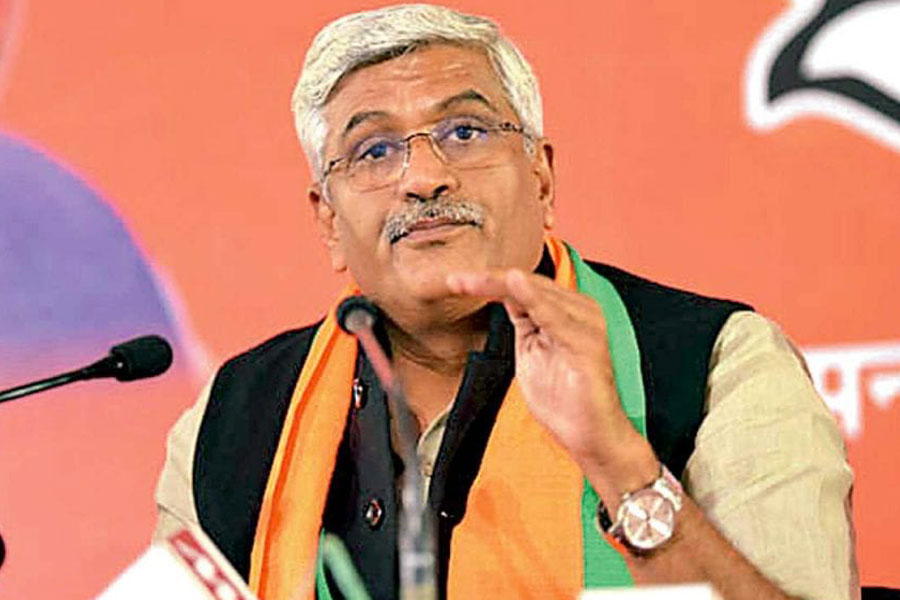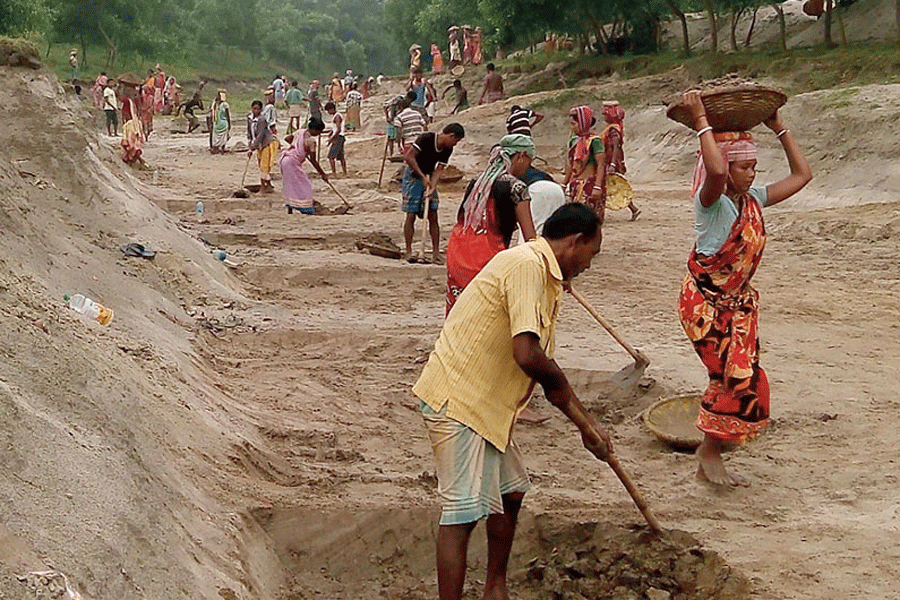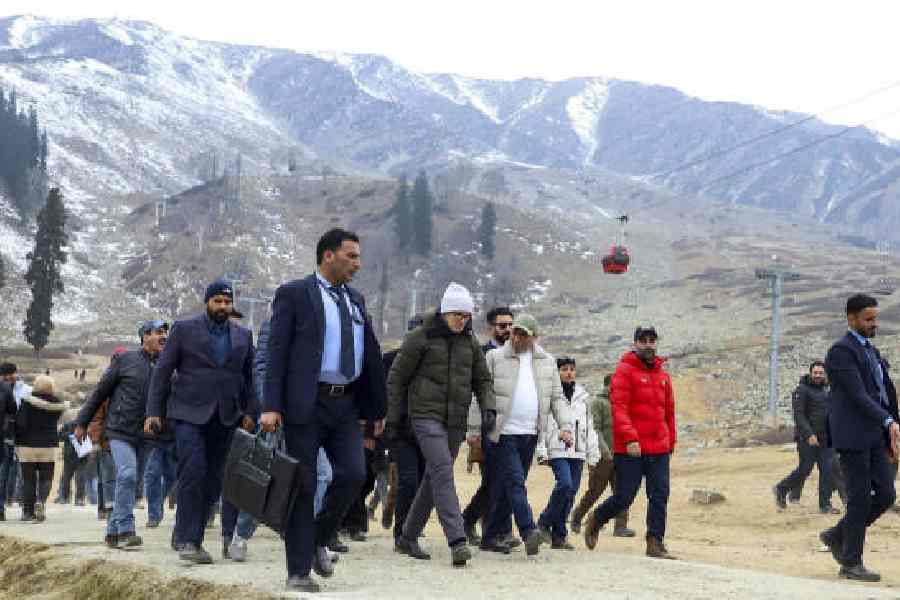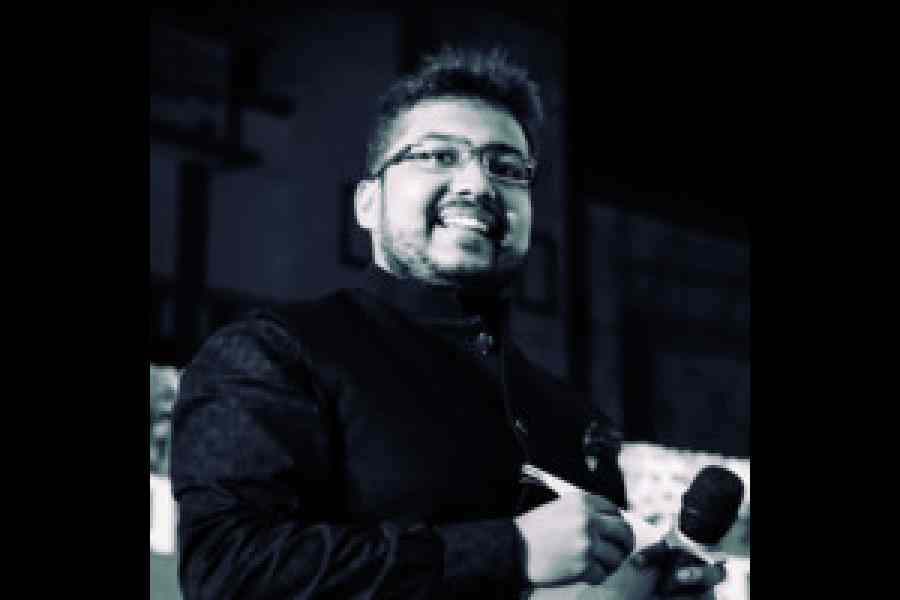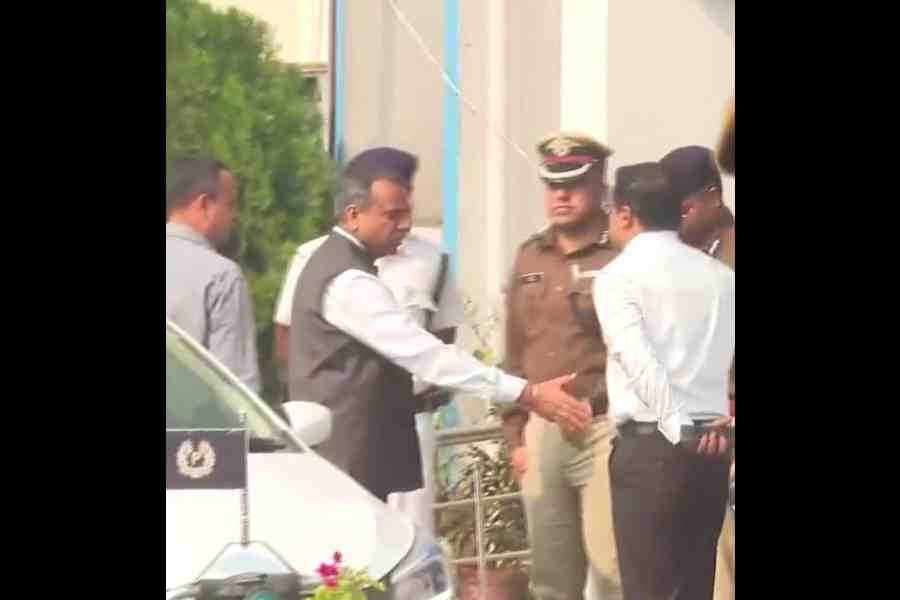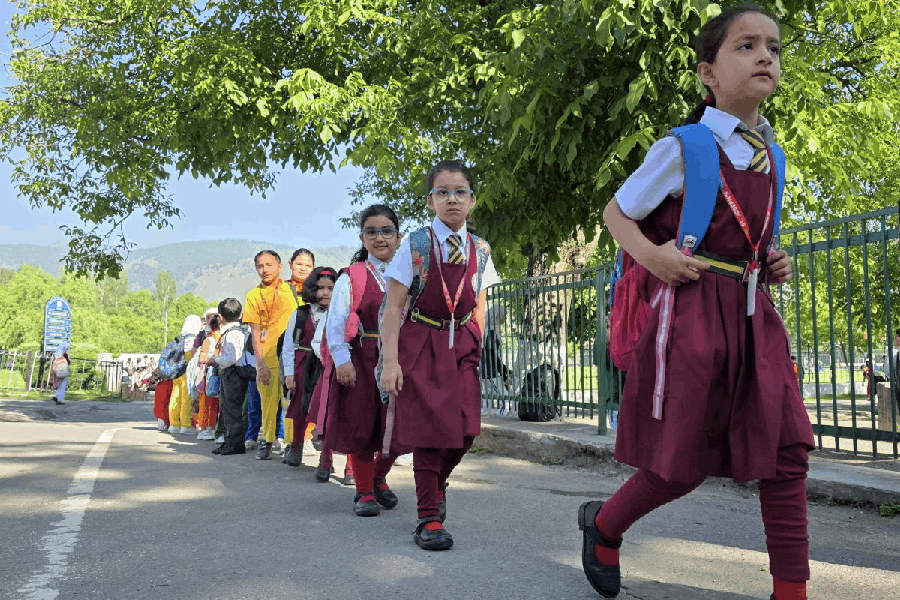 |
The rituals of the Jagannath Temple in Puri hold significance in the life of Oriyas in various ways. However, while many still continue intact, many have faded away with time.
According to the chronicle, Lord Jagannath enjoyed a mahari dance recital before retiring to bed at night. It was for this reason that the temple dancers were appointed and given land grants for their survival. A mahari (dancer), quite early in her life, even before she attained puberty, was wedded to the Lord. She behaved as the Lord’s spouse and sang and danced the Gita Govinda by poet Jayadeva to please her Lord. The poems that rely heavily on the erotic love play of Radha Krishna are the Lords’ most favourite ones. The Lord is especially dressed for this nocturnal ritual with exclusively woven saris having the stanzas of the poem done in tie-dye technique by the weavers of Kenduli and Nuapatna. Aesthetics involved in such a ritual was quite thoughtful and astounding. This was a moment of intimacy in which the spouse poured her heart to her Lord. Devotees were not allowed into the sanctorum where the dance was performed. It was meant exclusively for the Lords’ private viewing.
Those who had thought of such a highly imaginative ritual involving poetry, dance and textile, did perhaps recreate a sophisticated cultural scenario that eventually would not be confined to the precincts of a temple, rather it would involve a whole lot of professionals comprising gayenis (singers), dancers, textile weavers, dressers, percussionists and such other ritualistic performers. The ritual turned out to be an institution and it was Narasingha Deva II (AD 1278-1309) who first promulgated a royal decree to make recitation of Gita Govinda compulsory in the temple. It appears that the Gita Govinda seva (service to the lord through singing and dancing of Gita Govinda) gained momentum under the patronage of Ramachandra Deva, ruler of Khurda. This service was considered a great honour extended to talented artists who enjoyed certain privileges.
The Gita Govinda dance ritual projects a blend of literary, visual and performing aspects of creativity, therefore, vital for the growth of cultural values. It was a cultural project that was installed in the temple proceedings so that the devout and the laity could get the fragrance of our dynamic cultural manifestations.
This particular grand ritual at the moment, suffers gravely from the absence of temple dancers, the maharis. These dancers, who were forbidden to marry other than the Lord, gradually declined in number precisely because even other family members of a mahari, as a matter of convention, were not allowed to marry beyond a severely restricted circle of families based in Puri. Such conservative and unthoughtful practices resulted in decrease of dancers. The last surviving mahari, Sashimani Devi, is in her late 70s, ill and even unable to stand, nevertheless being showcased in several public functions as the sole representative of the glorious divine temple dancers. The organisers of such public functions even evince pride in displaying such a helpless woman who, at times, is considered as Lakshmi. The temple administration never took it seriously to perform its supreme duty to look into the ritualistic comforts of the Lord who is otherwise considered a state deity.
As a striking contrast to such a deplorable situation inside the temple, thousands of Odissi dancers - young and old - perform on public stages and entertain thousands of ordinary mortals like us in the evening though not at night. Initially, when the mahari dance was taken out of the temple sanctorum on to the modern theatre stage, there was a kind of fear psychosis of ignoring the Lord and to ally the fear, an image of Jagannath was placed at a corner on the stage.
The grand old mahari tradition of the Puri temple was fake and we started taking pride in such inauthentic temple dance on the stage while the Lord virtually was left lamented and ignored by his own people. As if this was not enough, another class of pseudo-temple dancers were created using the grand old name of mahari. It was said that these dancers were the off-springs of the authentic temple dancers and were default from the earlier dancers known as Odissi dancers. What an irony and travesty of the Lord’s fortune. If it is argued that the Lord is omnipresent and He enjoyed all these dance recitals, then we are inviting a great cultural disaster and an aesthetic impropriety that would threaten our Odissi identity. I always profess in the dual presence of the Lord - one in which the Lord is created by men and the other in which the men are the Lord’s creation. In the polemics of materiality, a temple is the fulfilment of human endeavour along with the enshrined images fashioned in wood, stone and metal. The rituals and paraphernalia that eventually grow around the deity and the temple are thus considered sacred and inviolable. However, there is no harm in building a new tradition if those are congenial to societal growth.
How come we did not hesitate to destroy a tradition so sacrosanct to our state deity. On one hand, we hail the Lord and on the other, we curtail His privilege to watch a dance while retiring to bed. When we appoint all kinds of odd people to serve and protect the deity (nowadays police are also included in the list) what stops us from appointing maharis in the temple? In course of time the tradition of dancing women was disgraced by the dancers and the temple priests who exploited their unmarried status. This was the advantage of both the dancers and the priests. At one time, there was hue and cry to stop prostitution in the garb of divinity. The divinity was just skin deep. It was an all-India phenomenon and nothing peculiar to Orissa. In such a depressing scenario, the Lord would perhaps prefer a married mahari, devout and accomplished to serve Him dance. While it is argued that Padmavati, spouse of poet Jayadev was the first mahari, there may not be hesitations to prefer married women as dancers of the Lord.
Several temples, particularly in the south, are reviving dance tradition. In its truest spirit, a dance form cannot be viewed in its artistry in absence of a temple façade more so when each dance posture is a kinetic stance of this cultural art. A modern dancer feels herself quite significant if she gets a chance to dance inside a temple - this attitude has led many dancers into the temple’s inner halls. After all we should think why a dance hall (nata mandap) exists on the temple premises. Is it not to provide a platform to the dancers to dance and offer their art to the Lord? I remember late Sanjukta Panigrahi had once wished to dance in the Jagannath Temple and be appointed as a mahari which was denied to her by the temple administration. I do not find any logic in such a denial. I am arguing not only for the reintroduction of dancers and recreation of the dance tradition in the temple, but also in the Lingaraj Temple in Bhubaneswar and in the Sun Temple at Konark as a daily ritual. Of course, the dancer should be provided with all comforts and a strict vigil on the people surrounding the dancer must be kept by authorities, so that she is not exploited.
Unless we rethink in terms of our temple traditions, we will be losing a vital cultural link that connects the temples with the arts of Orissa. This is a serious matter which needs sympathetic understanding of our cultural roots. Then why deny the Lord His unique privilege of enjoying dance in the temple?


